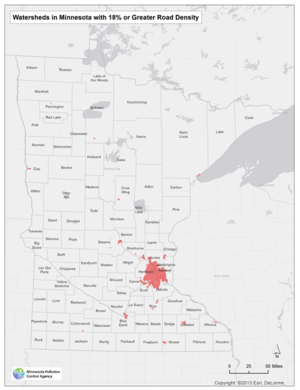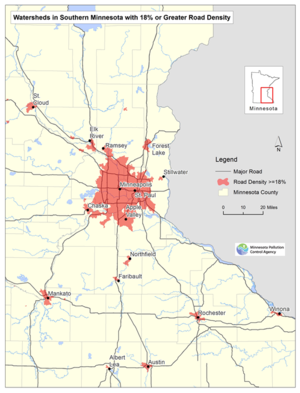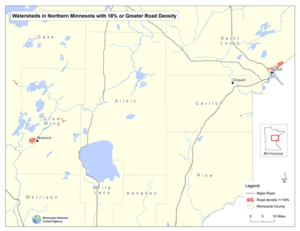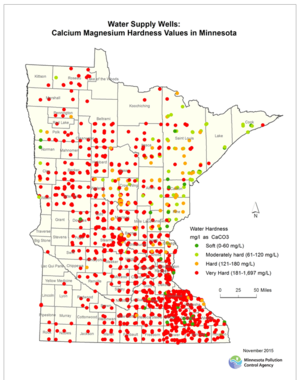
TCMA Chloride Management Plan - Prioritizing and Implementing Restoration and Protection - Prioritization and critical areas
To see this section as a separate page link here.
This plan has been developed for many different audiences. Organizations interested in reducing the amount of salt in waters should start with an effort to fully understand the problem and determine what role the organization plays in contributing, preventing, or remediating the growing trend of increased chloride in surface and groundwater.
Prioritization of efforts to reduce chloride may be based on current water quality conditions. Waters found to exceed the state standard and their contributing watersheds should be given top priority for chloride reduction efforts. Many waters are considered to be high risk, but do not exceed the standard at this time. These areas may be given second priority unless there are no known chloride impairments in the watershed, and then the high risk waters could be given highest priority.
Prioritization of reduction efforts may also be based on the relative size and impact of the source of chloride, such as prioritizing winter maintenance activities in areas with a high density of impervious surfaces, or putting emphasis on residential water softeners for those watersheds where wastewater treatment facilities are identified as a major contributor of chloride. There may also be other ways that are more appropriate for each organization to determine where to prioritize reduction efforts.
Critical areas have been identified where chloride reduction efforts are necessary to achieve water quality goals. Two strategies have been used based on the source of chloride to identify critical watershed. The first strategy identifies watersheds with road densities of 18% or greater to identify watershed where chloride concentrations are typically above water quality standards. The maps illustrate critical watersheds statewide, in southern Minnesota, and in the norther part of Minnesota. An interactive map showing these critical areas is available on the MPCA Road Salt & Water Quality website. The second strategy used to identify critical areas for chloride reduction focuses on areas with drinking water supply wells with hard and very hard water. Through these two strategies critical areas have been identified across the state where chloride loadings are to be expected high and therefore implementation efforts to reduce chloride should be focused. For the protection of surface and ground waters implementation is encouraged statewide.
This page was last edited on 23 November 2022, at 16:34.



